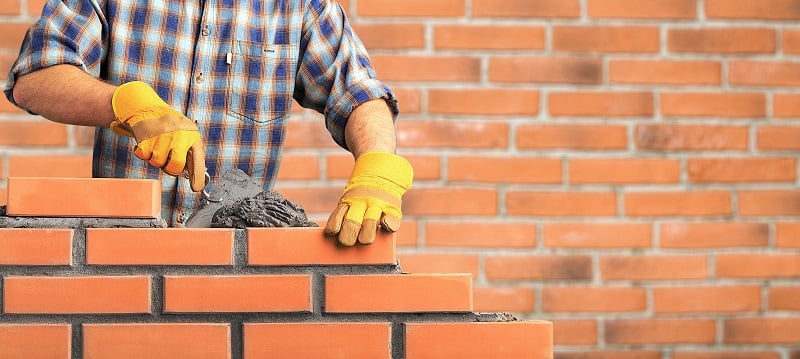Reputable Tuckpointing Services for Improving Brick and Stone Surfaces
Reputable Tuckpointing Services for Improving Brick and Stone Surfaces
Blog Article
Unlocking the Secrets of Lasting Stonework Construction Practices for Eco-Friendly Structures
In the realm of modern building and construction, the quest of sustainable practices has actually ended up being paramount. Amongst the myriad techniques to green structure, sustainable stonework building stands out as a reliable and long lasting method that holds a riches of untapped potential. From the selection of materials to ingenious construction strategies, the secrets to achieving sustainability within stonework construction are diverse and intriguing. By discovering the benefits, materials, strategies, and future patterns of sustainable stonework, a much deeper understanding of how these techniques can shape the future of environment-friendly buildings arises.
Benefits of Lasting Masonry Construction
Embracing lasting stonework building methods not only lowers ecological influence however also supplies long-lasting financial advantages to builders and areas. By using products like recycled bricks, obstructs, and stones, contractors can significantly reduce the carbon impact of their jobs while advertising source effectiveness. Additionally, sustainable masonry building methods, such as proper insulation and thermal mass residential properties, can improve power performance within structures, leading to lowered functional expenses with time.
Furthermore, the sturdiness and strength of masonry frameworks contribute to long-term economic advantages. Structures constructed utilizing sustainable masonry techniques frequently need much less repair and maintenance, converting to set you back savings for building contractors and homeowner. The long life of masonry materials additionally guarantees that frameworks continue to be steady and safe and secure, lowering the need for regular remodellings or replacements.
Eco-Friendly Masonry Materials
Utilizing eco-friendly stonework materials is a crucial action in the direction of improving the sustainability of construction methods and minimizing environmental influence while maximizing long-lasting financial benefits. Sustainable masonry products are sourced, produced, and used in a fashion that decreases total environmental effect. Lasting concrete obstructs incorporate recycled accumulations and might include better insulation buildings, contributing to power effectiveness in structures.
Furthermore, natural materials like adobe, rammed planet, and straw bundles offer excellent thermal mass buildings, minimizing the need for heating and cooling energy. These materials are typically in your area readily available, promoting regional economic situations and decreasing transportation-related carbon discharges. By picking green stonework products, building and construction tasks can significantly decrease their environmental footprint and contribute to the production of much healthier, more lasting constructed settings.
Energy-Efficient Stonework Methods
Power effectiveness plays a vital duty in improving the sustainability of masonry building and construction methods. One key energy-efficient stonework technique is the use of thermal mass, which entails including dense products like concrete or brick right into the building's framework to take in and store heat.

Advancements in Lasting Stonework
Recent advancements in sustainable stonework practices have brought around ingenious methods that are reshaping the building and construction sector. One such technology is the growth of self-healing concrete, which uses germs embedded within the concrete to heal cracks autonomously. This breakthrough not just minimizes maintenance prices yet additionally improves the longevity of masonry structures, adding to their sustainability.
An additional significant innovation is using recycled aggregates in masonry building - masonry contractor. By including products such as crushed ceramic waste or recycled glass right into concrete blends, home builders can reduce the environmental influence of building tasks while maintaining architectural honesty. This technique not just draws away waste from landfills but additionally conserves natural deposits, making it a key innovation in sustainable masonry building and construction
Additionally, the assimilation of electronic layout tools, such as Building Info Modeling additional info (BIM), is revolutionizing the way stonework structures are prepared and created. BIM permits even more specific computations, reduced material wastefulness, and boosted energy effectiveness, inevitably bring about more sustainable building methods. These technologies jointly symbolize an appealing future for sustainable masonry building and construction in the era of environment-friendly structures.
Future Trends in Masonry Sustainability
With the ingenious strides made in lasting masonry practices, the future patterns in stonework sustainability are positioned to more revolutionize the building and construction sector. Among the key patterns forming check over here the future of masonry sustainability is the raised assimilation of technology. Advancements such as Structure Details Modeling (BIM) and digital truth simulations are being used to optimize stonework building and construction procedures, causing minimized product waste and boosted energy efficiency in structures.
In addition, the growth of unique lasting materials is established to play a substantial duty in improving the eco-friendliness of masonry construction. masonry contractor. Innovations like self-healing concrete, recycled accumulations, and bio-based binders are getting traction for their capacity to decrease ecological effect while maintaining structural honesty

Conclusion
To conclude, lasting masonry construction methods use countless advantages for environmentally friendly buildings. By utilizing environmentally friendly materials and energy-efficient techniques, stonework can contribute to a more lasting constructed setting. Innovations in sustainable stonework are continually being created to even more additional reading enhance the environmental efficiency of structures. Looking towards the future, the fad of stonework sustainability is expected to grow, bring about even more ecologically friendly and energy-efficient building and construction techniques in the years to find.
Report this page